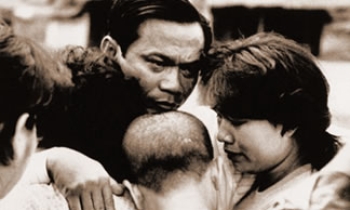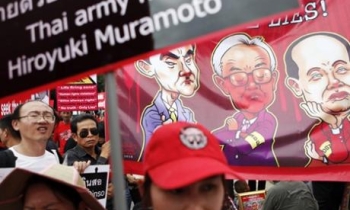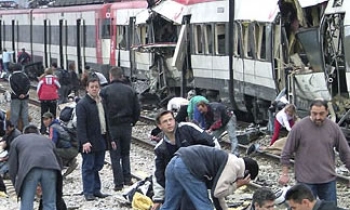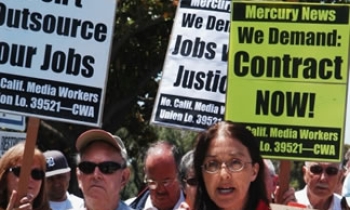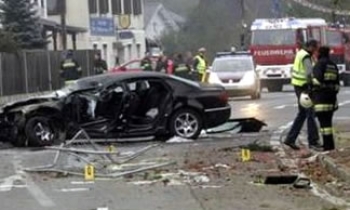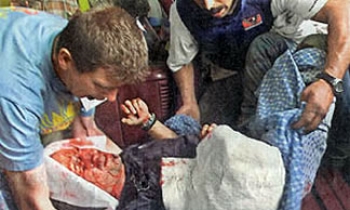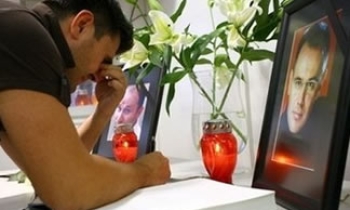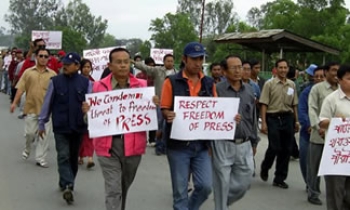NEW DELHI, DEC 30 (PTI): Fear of government controls came to haunt the Indian media in 2006, a year which saw the much- resisted CAS finally moving toward roll-out and the struggling FM radio sector literally boom.
Just as media rode high on popular public support to sting operations, especially those exposing MPs allegedly accepting money for raising questions or for diverting funds from MPLAD schemes, came a shocker when reports surfaced that the government was working on a bill that would effectively curtail media's independence.
The Broadcasting Services Regulation Bill 2006, a draft of which came in the hands of the media, was aimed at giving sweeping powers to the Government to take control and manage private broadcasting channels in certain eventualities.
The Bill also gave powers to "authorised officers to inspect, search and seize equipment" of media in case of any violation.
The proposal, for obvious reasons, saw the media cry foul forcing the Government to not only keep introduction of the Bill in abeyance but also invite suggestions from media industry on a new draft bill it issued with some modifications.
Another issue that saw the Ministry on a sticky wicket was related to the issue of on-screen smoking, which Health Minister Ambumani Ramadoss refused to give up. Information and Broadcasting Minister P R Dasmunsi clearly looked uneasy in a balancing act, especially as the film industry and Censor Board Chief made a case for what they termed creative freedom.
The issue remains unresolved and going by the magnitude of controversy it could create, the Ministry seems happy with the vagueness associated the matter.
Controversies apart, 2006 was also a year that saw one of the broadcasting sector's most contentious issues -- Conditional Access System, infamous as CAS -- move toward implementation.
A brainchild of erstwhile BJP-led NDA government, the roll-out of cable TV delivery system in notified areas of Delhi, Mumbai and Kolkata had been in limbo for last three years or so, except for Chennai where it was implemented with little success.
After Delhi High Court refused to buy government pleas that its implementation should be delayed for some more time, the Government was left with no option but to order its roll-out from the New Year.
A favourable Rs 5 rate per pay channel, ordered by TRAI for CAS areas also seems to be an enabling factor for roll-out of the new system.
But if any issue for which the Government needs to pat itself, it was the way it sold FM radio stations in second phase of bidding, primarily led by positive policy measures.
After the first round of allotments ended in disaster and losses for the very-few operating FM radio companies, the Government relaxed the policy framework, shifting to a revenue share regime.
In fact, the Government even liberalised the sector and allowed 20 per cent FDI in FM radio, another positive for the industry.
The Government was able to sell about 280 radio stations in around 91 cities across the country, earning a good Rs 1,145 crore as revenue by way of one-time entry fee from new players and migration fee from those already in operation.
Spread over five rounds, Phase II of licensing saw not only existing players like the Times Group, Music Broadcast and Radio Mid-Day clamouring for new cities, but also new entrants like Adlabs of Anil Ambani and HT Music and Entertainment win licenses.
Another area where Government's efforts in the year were directed was on the issue of ensuring feed of sporting events, especially cricket, to cash-crunched Prasar Bharati.
After some of the private broadcasters refused to share feed with Doordarshan, the Government made clear that it would introduce a Bill in the Parliament that would pave the way for a legislation on the matter, making it binding on private broadcasters to share the feed in events of "national interest".
Talking about cricket, the vexed i ssue of BCCI's cricket telecast rights -- which landed more in courts rather than in a broadcaster's pockets -- was finally resolved. Nimbus stumped established players like ESPN-Star and Zee to bag the four-year global media rights for a staggering 612 million dollars, putting an end to constant bickering over the matter.
On the corporate side, 2006 looked like the year for expansion announcements by media companies. NDTV announced plans for expanding beyond news and also beyond India. These included more channels, including entertainment and metro-centric.
Raghav Behl's TV18 network also moved ahead on the path of expansion. The company, which said it will diversify into film production and distribution, also bought a controlling stake in Jagran's hindi news channel, that has now been rechristened IBN7.
Toward the end of the year, the company purchased business news wire, Crisil Market Wire, strengthening its news gathering network.
The Zee group, one of the India's oldest media and entertainment group, also was in an expansion mode as the company bought a stake in Dubai-based Taj Television, owners of sports channel Ten Sports. The group also got the telecast rights for Indian cricket team's matches in non-ICC countries.
Zee, through an investment company Media Vest, was also in the news for takeover of domestic news wire United News of India (UNI), though the issue has landed in the Company Law Board after protest from some of the existing shareholders.
A significant development toward the end of the year, on the media side, was the 50:50 joint venture memorandum of understanding between rivals HT Media and The Times of India Group to jointly publish a newspaper in Delhi.
The companies said the joint venture would draw strength from the competencies of both Groups, allowing them to work together to efficiently grow an exciting and nascent market.
Singh said the country was passing through a "difficult phase" and it climed only the BJP was capable of facing and tackling them.
He asked party workers here to strengthen the party so that it could tackle these problems and lead the country.

